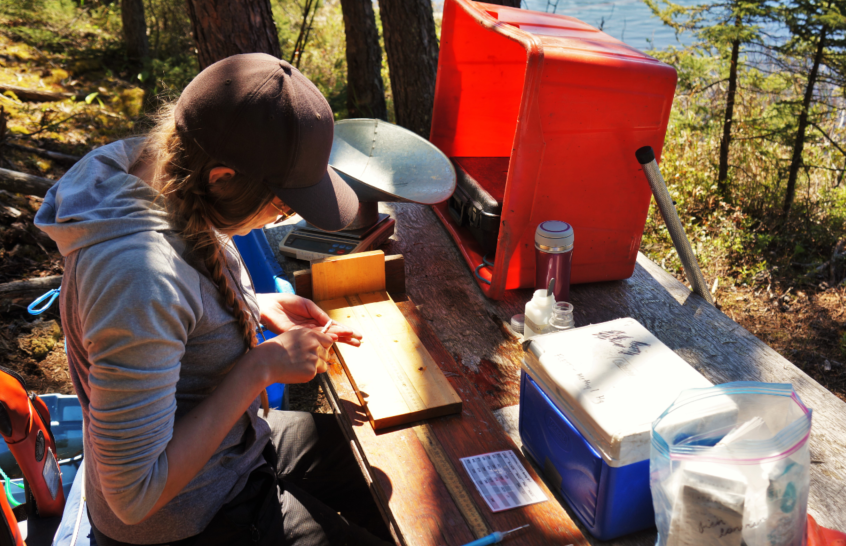Infrastructure, Industrialization and Innovation: Why SDG 9 matters and how we can achieve it
With half the world now living in cities, and billions of dollars spent each year on growth and infrastructure, we need to finance and implement sustainable infrastructure practices that reduce our environmental footprint, employ clean technologies and are economically viable.
Could the world’s battle with pollution be won with a series of innovative ideas and a rethinking of how we structure our economies?
With half the world now living in cities and billions of dollars spent each year on growth and infrastructure, we need to finance and implement sustainable infrastructure practices that reduce our environmental footprint, employ clean technologies and are economically viable.
Infrastructure, Industrialization and Innovation
Sustainable Development Goal 9, one of 17 global goals for people, prosperity and the planet, is dedicated to “build[ing] resilient infrastructure, promot[ing] inclusive and sustainable industrialization and foster[ing] innovation.”
It seems like a broad goal, touching on everything from sustainable cities and scientific research to communications technology and financial services. A closer look at its targets, however, reveals a quite specific set of intended achievements.

For example, Target 9.5 looks at boosting scientific research and intends to increase the number of full-time researchers per million inhabitants, and the amount of money spent on research as a proportion of GDP.
In much of the developing world, especially in rural communities, many still suffer from a lack of access to new technologies that could improve their livelihoods and standard of living. For example, around 2.6 billion people in the developing world still face difficulties in accessing electricity full time and many do not have access to water or basic sanitation.
Target 9.1 aims to “develop quality, reliable, sustainable and resilient infrastructure, including regional and transborder infrastructure.” This will be measured by the proportion of rural populations who live within 2 km of an all-season road (SDG indicator 9.1.1).
Sustainable Development Goal 9, one of 17 global goals for people, prosperity and the planet, is dedicated to building resilient infrastructure, promoting inclusive and sustainable industrialization and fostering innovation.
The disadvantages many developing countries are dealing with regarding financing new technologies is recognized in Target 9.A, which encourages technical and financial support to realize the immense potential that many of the world’s least-developed countries have for increased industrialization.
More than four billion people across the globe do not have access to the internet. The role of communications technology is critical in a sustainable future, and Target 9.C seeks to provide universal and affordable access to the Internet in least developed countries by 2020—just two years from now.
Bridging these divides will set out a more level playing field when it comes to fostering and benefiting from innovation.
Building a More Sustainable Future
As we draw ever closer to the 2030 deadline to achieve these goals, there is much to suggest we are headed in the right direction.
In the least developed countries, while agricultural and traditional sectors remain the main sources of employment, worldwide about 500 million people are employed in manufacturing, with numbers steadily increasing in the developing world.

However, women continue to comprise only a quarter of those researchers.
When it comes to innovation, low-income countries doubled their investment in research and development from USD 1.9 billion to USD 3.9 billion between 2007 and 2013. This still, however, represents a fraction of the global figure.
In 2013, there were 1,083 researchers per million inhabitants, on average, compared to 952 per million in 2007. However, it should be noted that this figure varies greatly across the world, and that women continue to comprise only a quarter of those researchers.
Access to mobile technology has spread rapidly around the world. By 2015, 69 per cent of the world’s population had access to mobile broadband networks. As expected, however, this dropped down to 29 per cent in rural areas.
You might also be interested in
A Balancing Act
With Nigeria's growing population in need of wide-ranging solutions to the multidimensional poverty it faces, a new IISD report outlines how the LNG dash could ultimately leave the economy more vulnerable to external shocks and without a solid domestic foundation.
Sustainable Asset Valuation of the Benefits of Nature-Based Infrastructure in Kenya
In this integrated cost-benefit analysis, the Nature-Based Infrastructure Global Resource Centre analyzes the potential of nature-based infrastructure (NBI) to combat water scarcity and enhance sustainable agriculture in Kenya.
Sustainable Asset Valuation (SAVi) of Nature-Based Infrastructure in Eswatini
In this integrated cost-benefit analysis, the Nature-Based Infrastructure Global Resource Centre analyzes the potential of nature-based infrastructure (NBI) to enhance agricultural productivity and hazard protection in Eswatini.
IISD Annual Report 2023–2024
While IISD's reputation as a convenor, a trusted thought leader, and a go-to source on key issues within the sustainable development field is stronger than ever, the work happening outside the spotlight is just as valuable.
